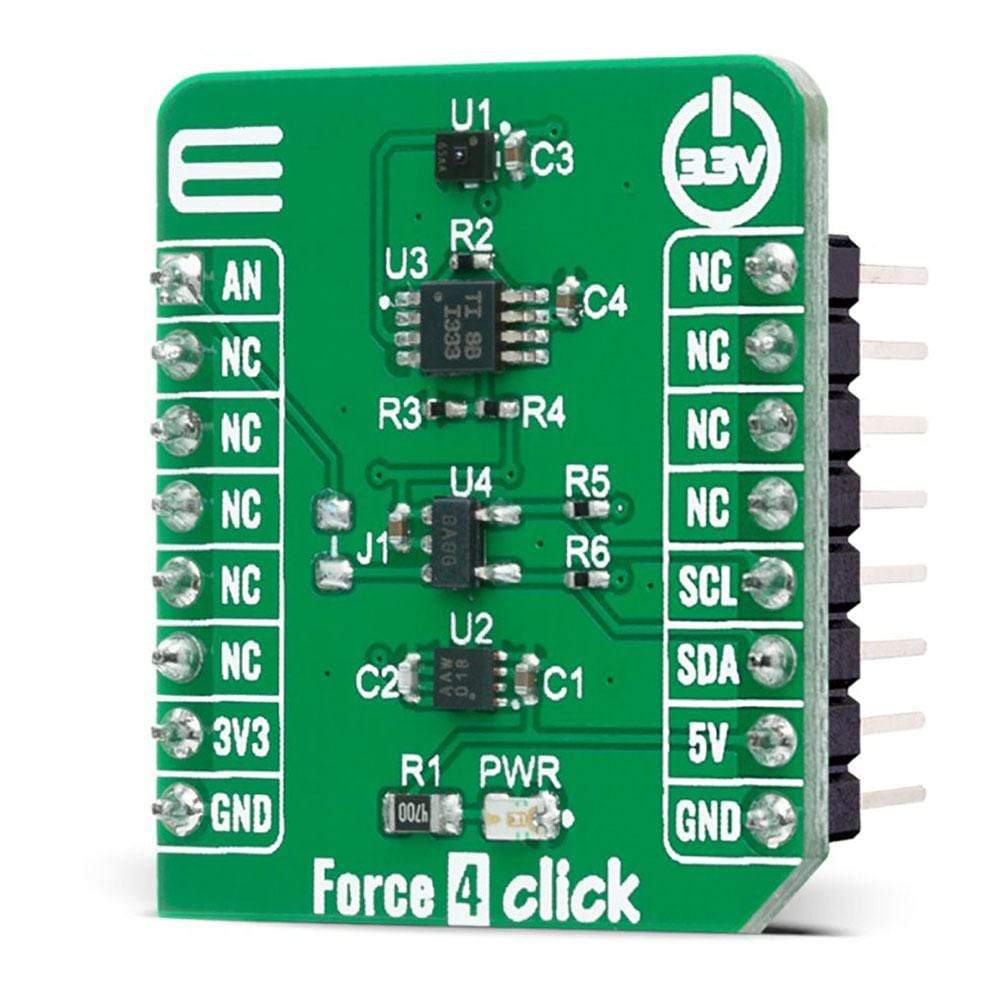
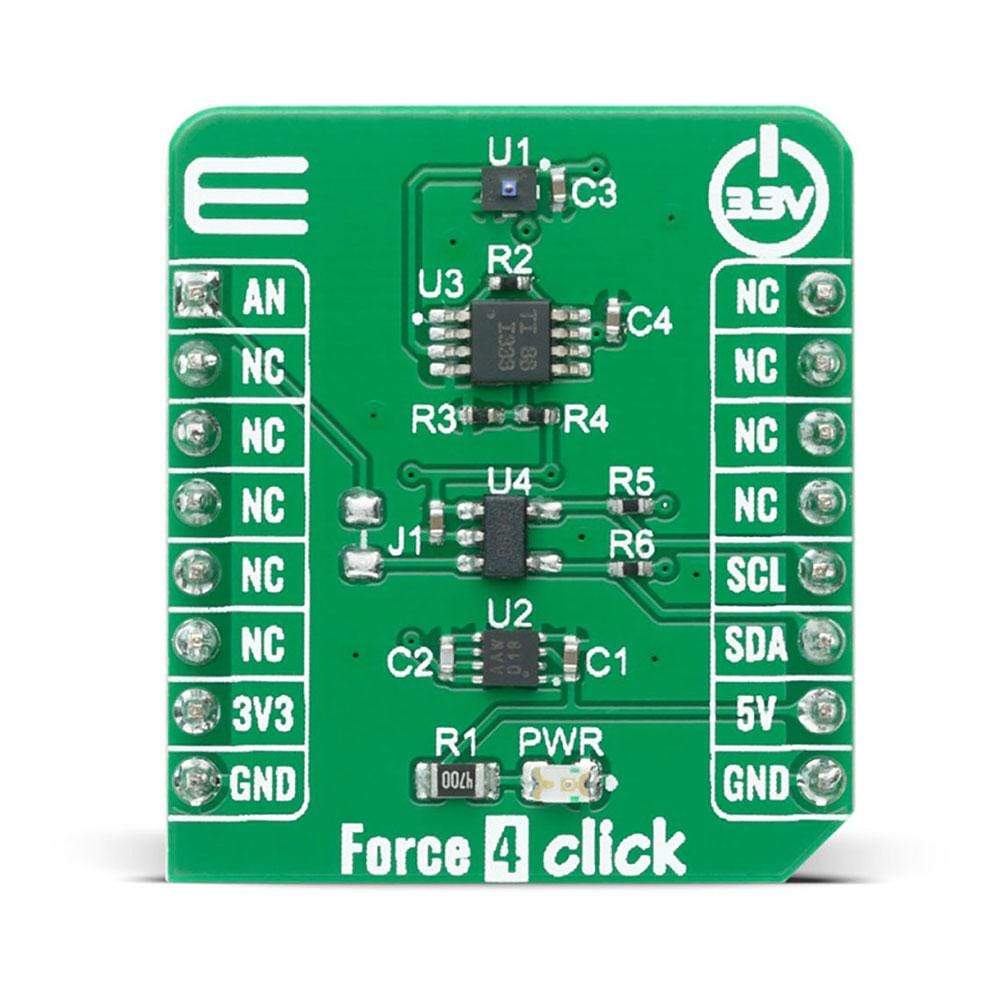
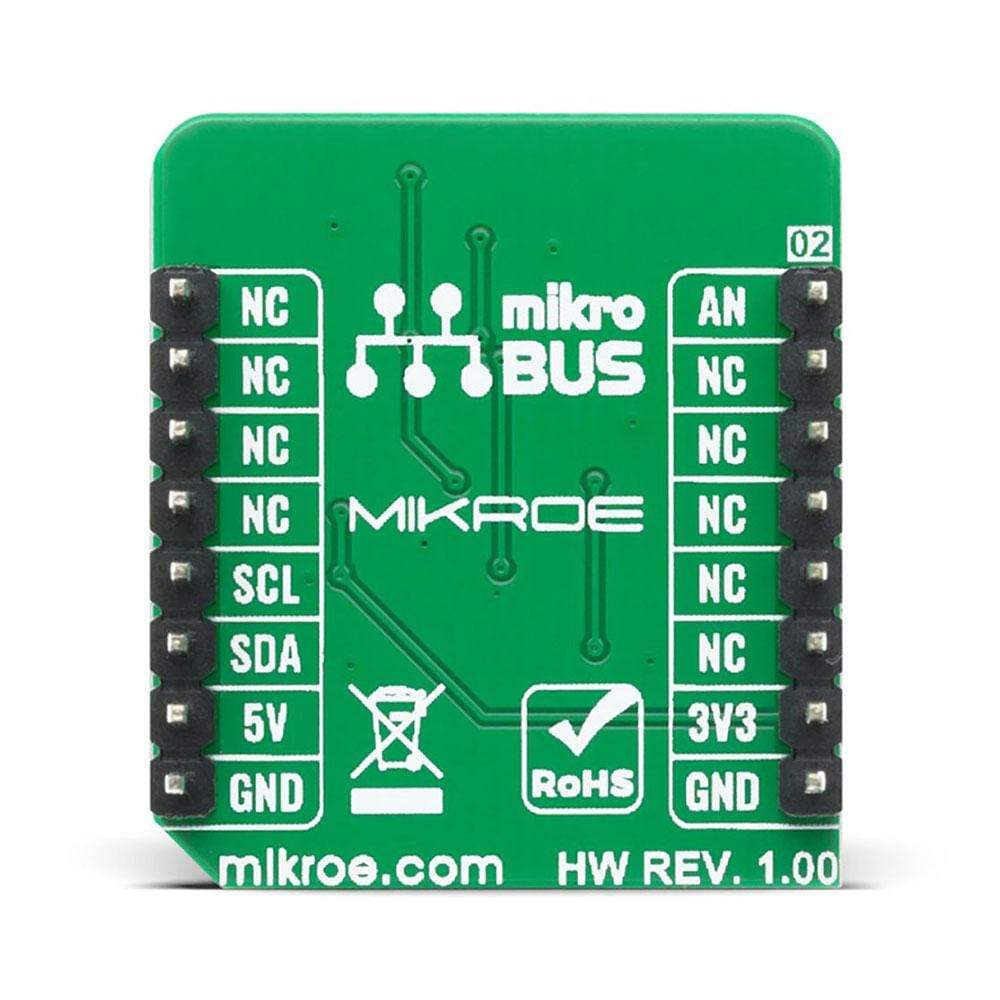
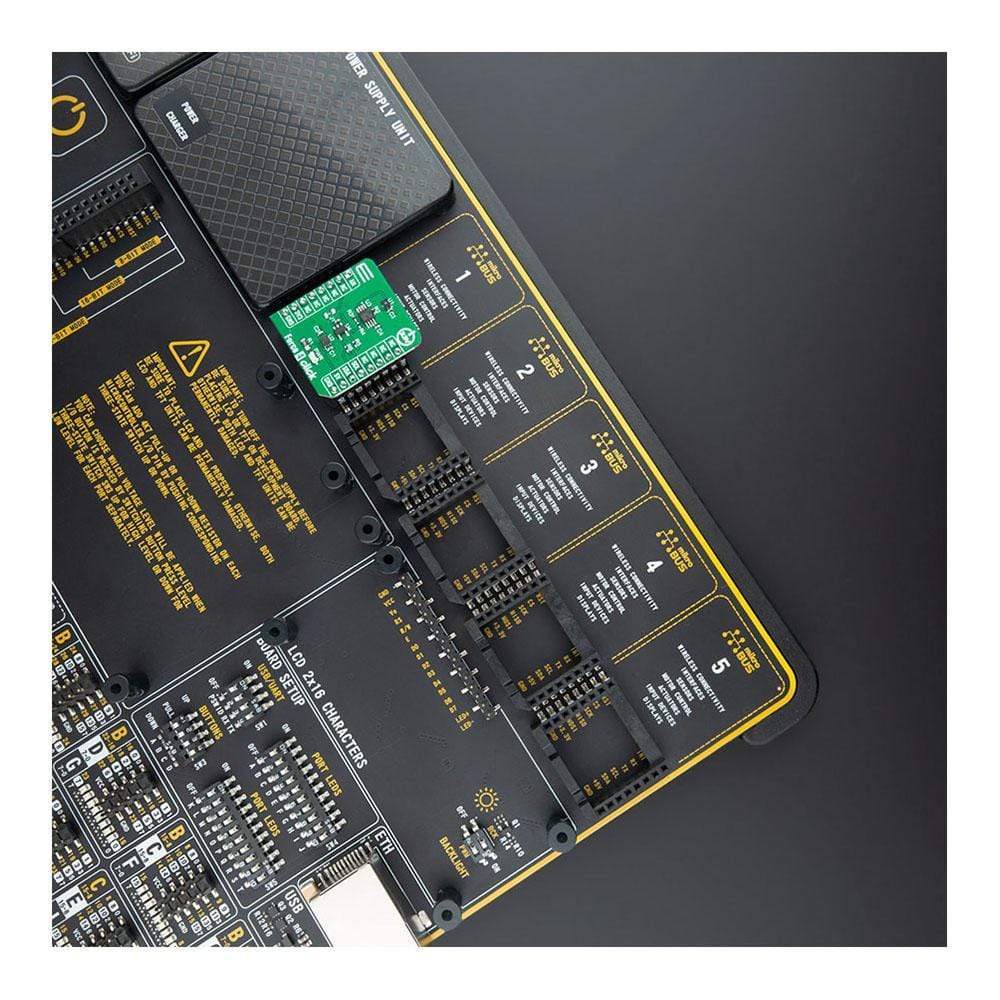
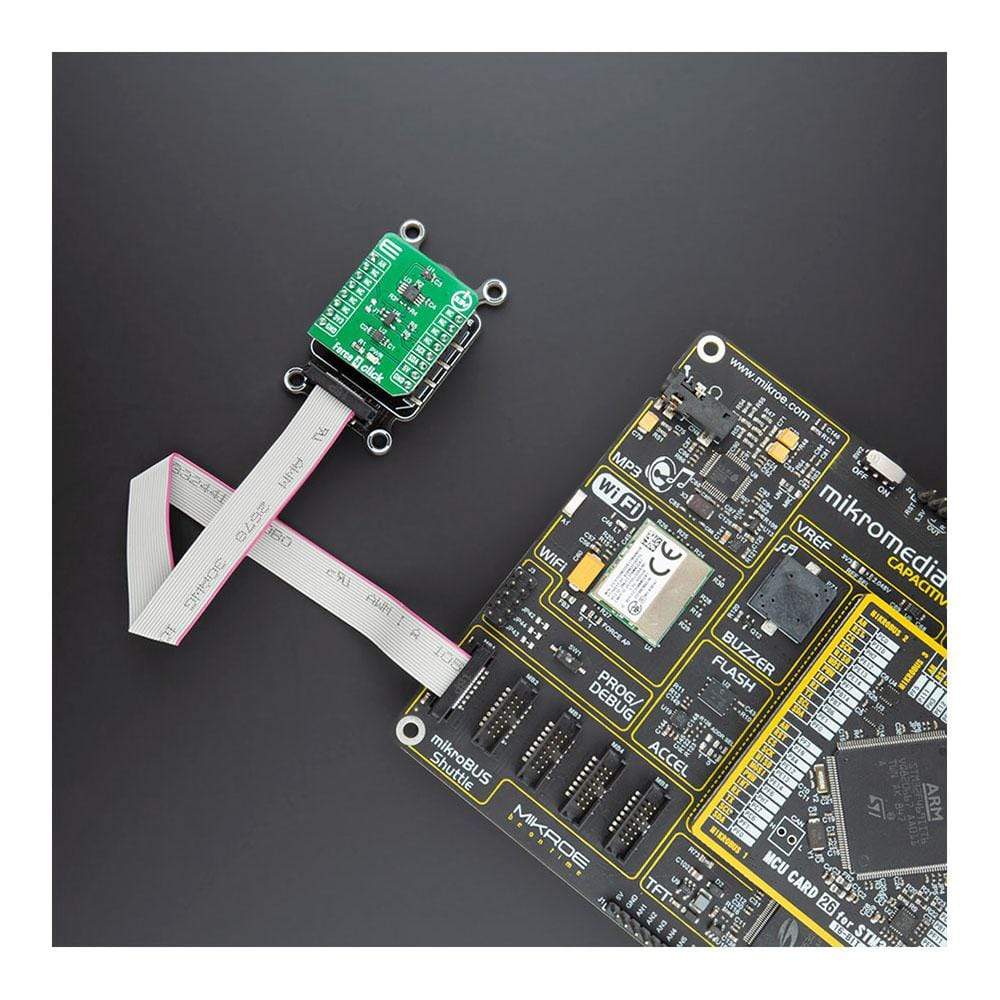
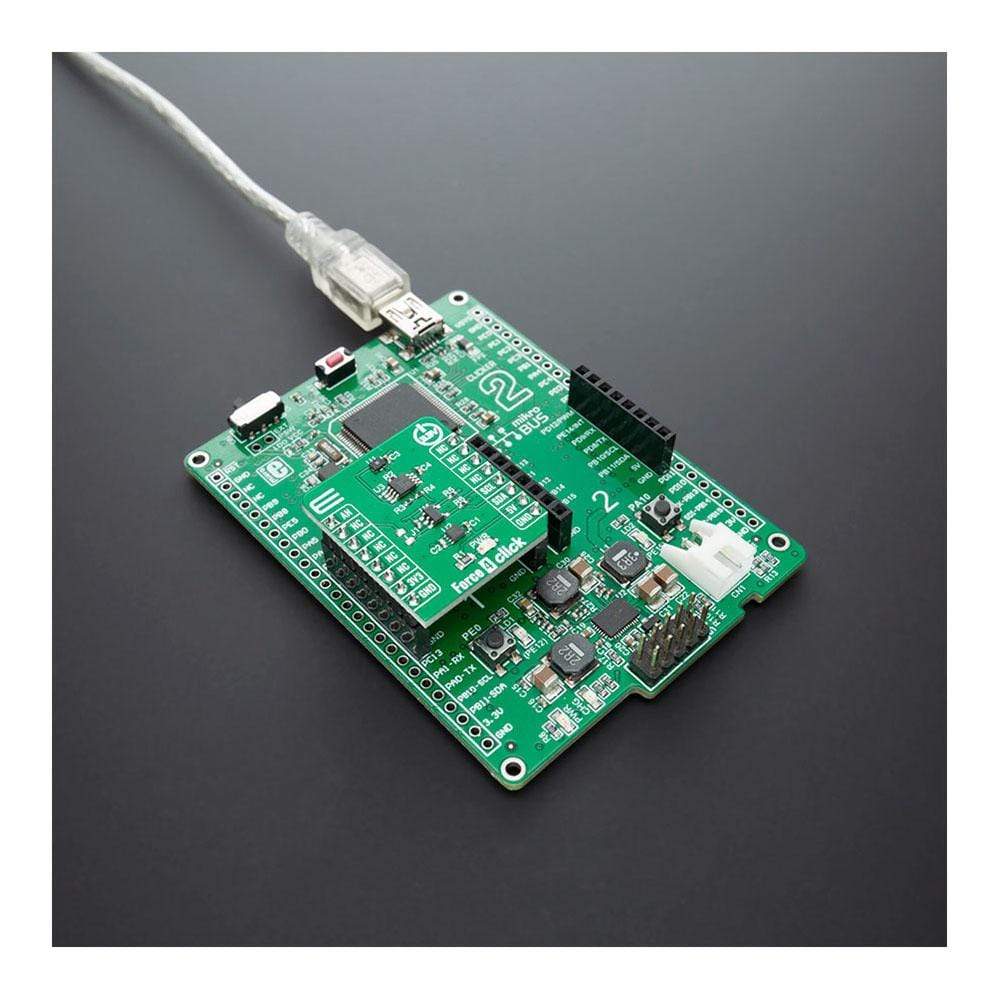
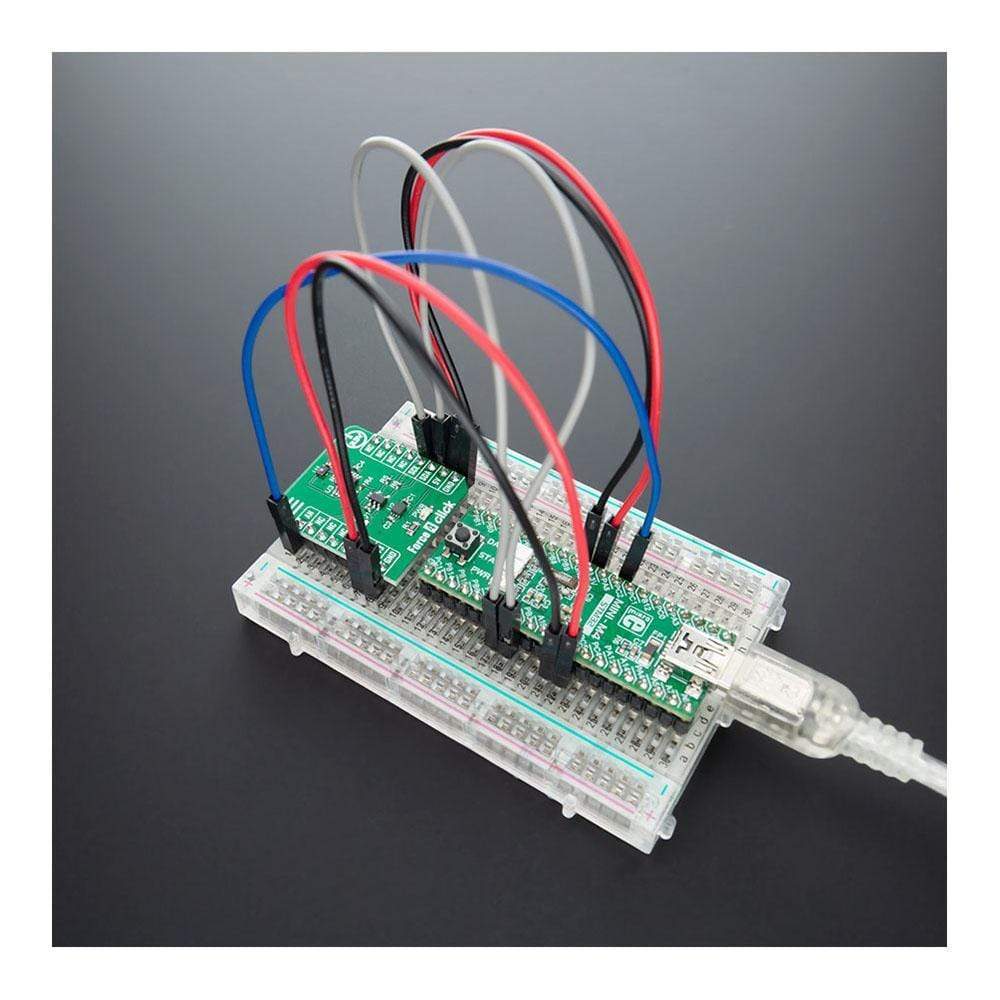
Overview
The Force 4 Click Board™ is based on HSFPAR003A piezoresistive force sensor from Alpsalpine. This product is a force sensor using the effect of a piezoresistive bridge circuit formed on a silicon diaphragm. Piezoresistive force sensors achieve higher linearity than other force sensors.
To help with stability and accuracy Force 4 Click Board™ also includes MCP1101-33 a high precision buffered voltage reference as a power supply to a force sensor that allows high stability and accuracy of output voltage readings.
Downloads
Le Force 4 Click Board™ est basé sur le capteur de force piézorésistif HSFPAR003A d'Alpsalpine. Ce produit est un capteur de force utilisant l'effet d'un circuit de pont piézorésistif formé sur un diaphragme en silicium. Les capteurs de force piézorésistifs atteignent une linéarité supérieure à celle des autres capteurs de force.
Pour contribuer à la stabilité et à la précision, Force 4 Click Board™ comprend également le MCP1101-33, une référence de tension tamponnée de haute précision comme alimentation d'un capteur de force qui permet une stabilité et une précision élevées des lectures de tension de sortie.
| General Information | |
|---|---|
Part Number (SKU) |
MIKROE-4193
|
Manufacturer |
|
| Physical and Mechanical | |
Weight |
0.016 kg
|
| Other | |
Country of Origin |
|
HS Code Customs Tariff code
|
|
EAN |
8606018717934
|
Warranty |
|
Frequently Asked Questions
Have a Question?
Be the first to ask a question about this.







